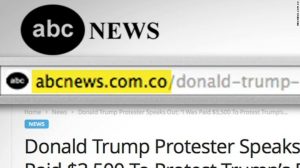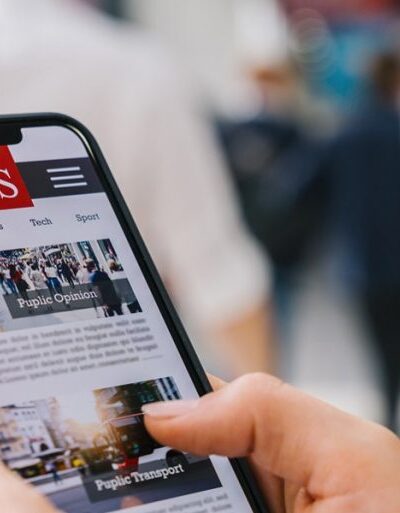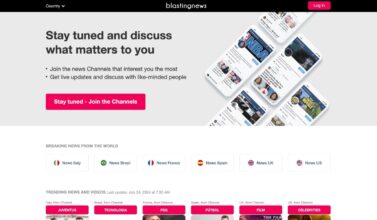Fake news has been around for a while, but it has only reached its’ climax when suggestions began floating around of the impact it brought to sway peoples’ opinion in the recently held U.S presidential elections.
To set the scene, fake news is news content of a hoax, disinformed or propaganda nature, that can be used to increase website traffic and social shares. Unlike satire, humor is not the object and the intent of publishing fake news content purposely creates negative sentiment and impact to the topic or person mentioned.
In the world where the line between augmented reality is becoming a true possibility to escapism, people can easily fall victim to content that can seem believable.
Let’s take this opportunity to properly to distinguish been original and fake news with the collective outlook of working together to publish content with great professionalism and integrity.
How do people create fake news?
First things first, how do people go about create fake news?
The main principle behind creating fake news identifying a popular mainstream agenda or news topic and putting a spin on this, with edited image graphics and headlines that grab the readers attention to drive clicks and revenue.
As reported by Media Shift, in early November, BuzzFeed News identified more than 100 pro-Trump websites being run from a single town in the former Yugoslav Republic of Macedonia. Thanks to wildly sensationalist Facebook posts recycled from American alt-right pages, “TrumpVision365.com,” “WorldPoliticus.com” and other sites compiled hundreds of thousands of Facebook followers. Reacting to BuzzFeed’s findings, President Obama reportedly said the “capacity to disseminate misinformation, wild conspiracy theories, to paint the opposition in wildly negative light without any rebuttal” has “accelerated in ways that much more sharply polarize the electorate and make it very difficult to have a common conversation.’”
Not to mention, there are articles out there that are providing steps towards developing credible fake news, as it has been a proven method of creating revenue (we won’t link to these sites to not further fuel the flame). There are also news generator sites and cloning solutions out there that help scale the process.
How to spot fake news?
The Washington Post summarizes this succinctly in the embedded video, and here are five quick checks that you can do to validate this:
- Double check the URL – any sites that have irregular domain extensions that try to replicate well-known media outlets i.e. abc.com.co (but the actual site is abc.go.com) is a pretty telling sign of the site containing fake news. Also look at the about us page, social media profiles and overall site setup (if there are any broken links or ads), which otherwise question the site’s authenticity.
- Does the photo look unrealistic? – It could be. Simply, drag and drop the photo into Google image search results or conduct a reverse image search to verify the original source of the image. If you find that reputable media company and news sites don’t have this image and aren’t covering the story, more than likely this will mean it’s fake news.
- Check your sources – Can you identify the original source of the news published? Check that source against other sources, and again, if major sites aren’t covering it, consider the authenticity of that piece.
- Install a fake news Chrome browser extensions – Newly created extensions such as FIB (Let’s stop living a lie), and B.S Detector Chrome extensions, as they can help you detect and notify fake news via their scraping methodologies and API’s across various sources i.e. Google Trusted Web Search API.
- Check the author – Some stories have no bi-lines or no evidence on who the writer is, whilst others have other the top acclamations and descriptions. Similar to no.3 make sure you identify original sources of the authors work and contributions online.
Solutions for fake news
Jan Dawson really well summarized the main four ways for resolving fake news, however, I will be rephrasing questions and approaches to these solutions based on my opinion that can hopefully lead you to action a decisions:
- Do nothing – keep things more so the same. But, with this becoming untenable and social media sites struggling to monitor this whilst balancing to keep a commitment to people’s free and open speech, is it right to keep a relative view of the type of content published on the web today?
- Leverage algorithms and artificial intelligence – Putting computers and machines to work in identifying fake news stories. University students have broken the code faster than game changers Facebook and Google (through building their extensions, as outlined earlier) however, with all machine learning solutions out there today, whilst they are effective in repeatable tasks considerable training, refinement and monetary is required to eventually help deal with fake news on a consistent basis, given its infancy. People also have their own personal opinions and machines always need a human element to determine opinion, to fake news.
- Use human curation by employees – Put teams of employees to squash fake news stories from being published, as mistakes from even the biggest publishers like New York times have accidently published fake news. This could be achieved from an operational and process level during the QA stage of publishing a content piece. Training is also out there (free or online), in order to upskill existing staff. To a smaller scale Are you ready to restructure your organization and procure specialist staff that can help with the process? Alternatively, do we need an industry level board to help with keeping human curation consistent and accountable?
- Use human curation by users – leverage the user base to flag fake content, through crowdsourcing. Sites adding reporting features (like Twitter has done as part of their efforts to address fake updates) for creating an external quality guidelines team as a double count measure in the QA process for either platforms and/or oganizations can be another path to take. It is important to not oversimplify measures and metrics for blocking fake news sites or articles i.e. no. of social shares, and collectively a blacklist is developed and shared across all external parties, in order to develop a consistent standard online. Again the question to you is, are you up to he challenge.
At the end of the day, the general consensus is that there is a need for resolving the current state of fake news. Experimentation and a combination of the above will be key to help improve the integrity of published content and news online. Now it’s a matter of who will make the bold leap in bringing this movement forward with a solid solution that will lead to the commitment from others.
I guess in the meantime, why don’t we help Melissa Zander from Stanbrook University, with her efforts (for her students) in creating a comprehensive False, Misleading, Clickbait-y, and/or Satirical “News” Sources guide – https://docs.google.com/document/d/10eA5-mCZLSS4MQY5QGb5ewC3VAL6pLkT53V_81ZyitM/preview ?









